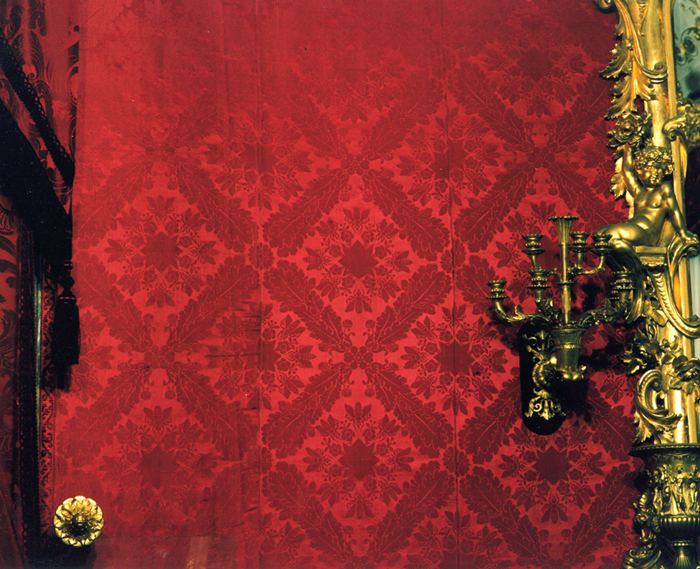
Impossible Gaze #3
Origin: Room XII – The Red Room
Appartamento del Re Appartamenti Reali
Palazzo Pitti
Norman Bryson describes the much theorized activity of the gaze and the glance: “vision is portrayed under two aspects: one vigilant, masterful, ‘spiritual,' and the other subversive, random, disorderly.” 1 The gaze is an intelligible engagement and a contemplative state. It is the focus of attention, like the focus of a camera lens on its subject. The glance, however, is the more whimsical attribute of sight, rapidly consuming the veneer of a multitude of objects without engaging in analysis or reflection. In these photographs the roles of the gaze and the glance are effectively reversed. In the museum the glance's continuous movement maps objects and architecture, but is also subordinated by space as the viewer moves through it. The gaze, in contrast, consciously punctuates this movement.
By focussing on the more ephemeral and ambulatory aspects of the glance in the museum, I have immobilized it for a new viewer's gaze. The intuitive and idiosyncratic experience of museum viewing is made up of incessant ocular movement over walls and objects, through rooms, and between artworks. Impossible Gaze expresses Bryson's observation that the path of the glance “is irregular, unpredictable, and intermittent.” 2 Here the images play with photography's insistence on mimicking physiological vision, employing the camera's viewfinder to intimate the viewer's line of sight as they move through the corridors of the museum and capturing an image that traces precisely what lies in the path of their glance.
1. Norman Bryson, “The Gaze and the Glance” ( Vision and Painting: The Logic of the Gaze, London: Macmillan, 1983), 93.
2. Ibid., 121.